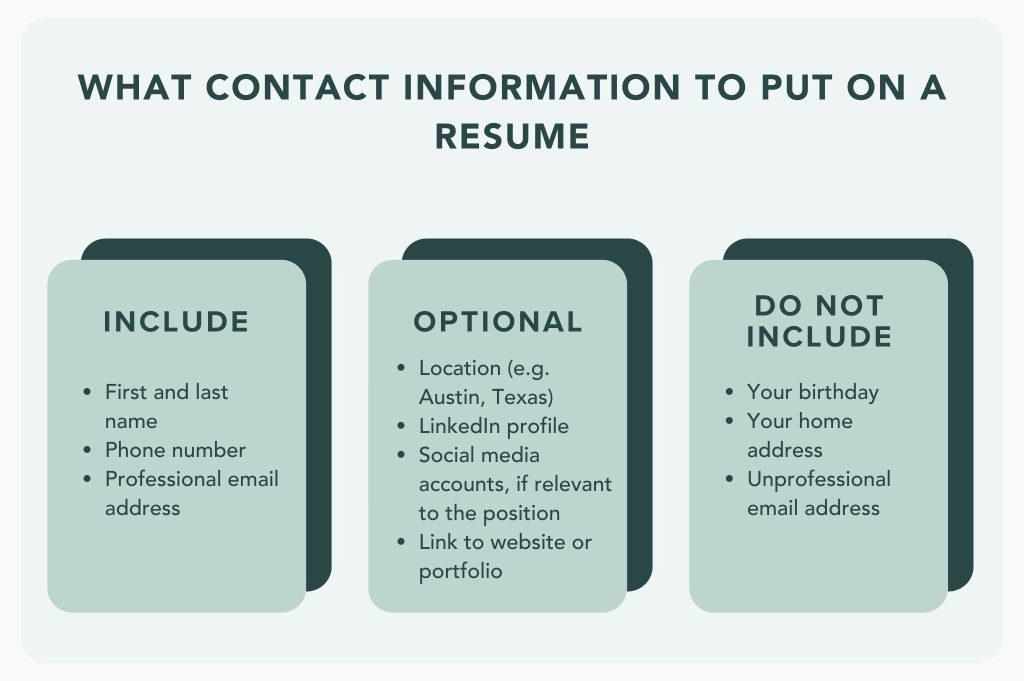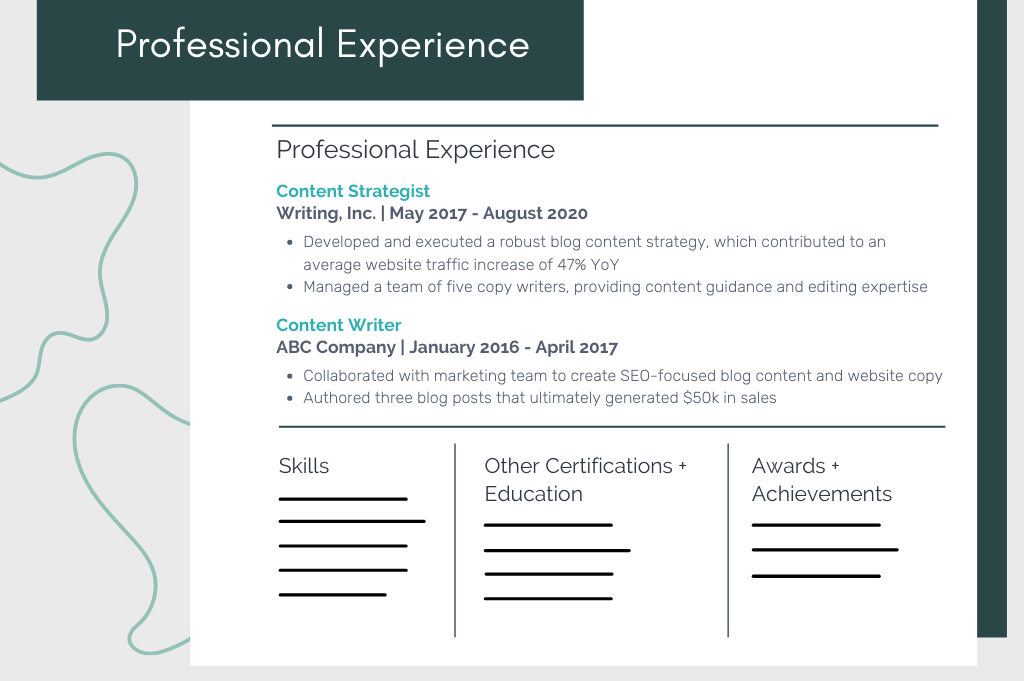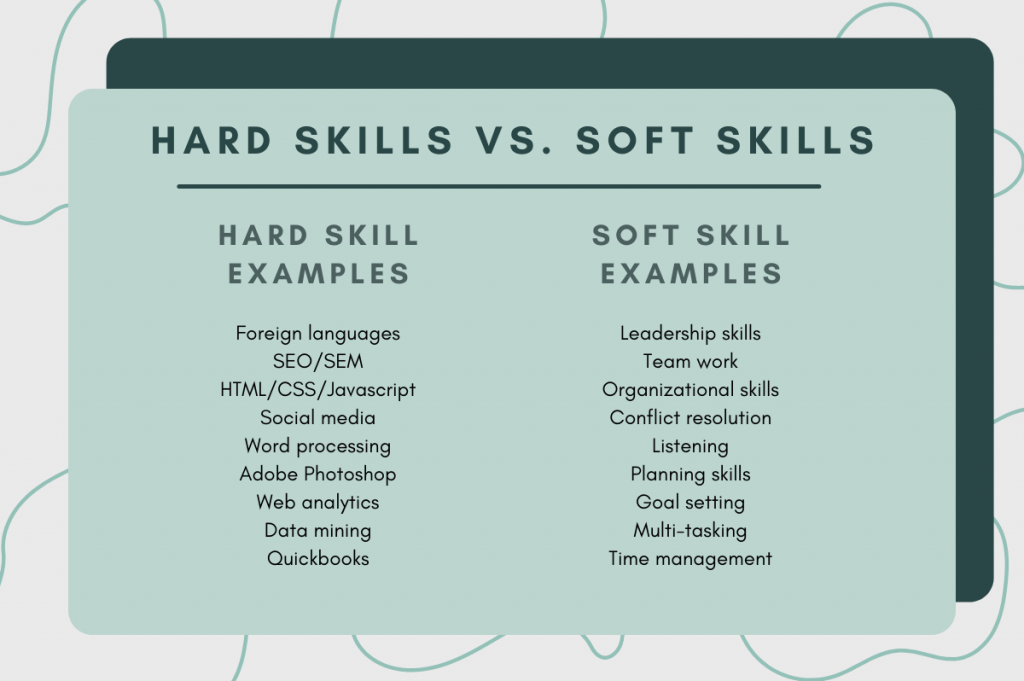A good resume can set you apart from other job candidates, help you land interviews with your favorite companies, and ultimately lead to you getting a job offer for your dream job. A bad resume, on the other hand, will leave you waiting for a phone call for months on end.
Compiling your work experience, academic background, skills, and achievements onto one page can feel like an art form. If you’re wondering what to put on your resume, you’ve come to the right place!

In this article, we’ll break down:
What is the purpose of a resume?
Your resume, also known as a curriculum vitae or CV, is your first opportunity to showcase your skills, experience, and professional background to potential employers. It’s a standard across most industries for companies to request resumes, as they allow hiring managers to select the best-qualified candidates to move forward with in the hiring process.
The purpose of a resume is to:
- Provide a brief snapshot of your education and career history
- Showcase your hard and soft skills
- Impress potential employers and make them want to know more about you
Keep in mind that a resume in and of itself typically won’t get you a job— it gets you an interview. A resume is usually only a one-page document (unless an employer requests an expanded resume), so you should fight the urge to include everything about yourself and your professional background. In fact, one study showed that recruiters look at resumes for only seven seconds. You’ll have a chance to elaborate on your experiences during an interview if the hiring manager feels that you’re a good fit.
What to put on your resume
Though exact resume formats may vary from industry to industry, here’s a general idea of what categories you should include.
Contact information
First and foremost, make sure the employer has a way to reach you by including your contact information. It would be a shame if a hiring manager liked what they saw on the resume but had no way to reach you to set up an interview! At a minimum, you should include your name, phone number, and email address.

Academic history
Next, describe your academic history.
For this section, list the recent education that you’ve received first and work backward in reverse-chronological order. Note your degree, major or concentration, and the years attended. If you have not yet graduated, you can include your anticipated graduation date.
If you have attended college or a trade school, you do not need to include your high school education. However, if high school is the highest level of education that you’ve received or you’re currently in high school, you can include your degree or anticipated graduation date.
It is also appropriate to list activities and clubs that you participated in related to your school, as well as any relevant honors or awards that you received. Be sure to keep this short and aim to include info relevant to the position that you’re applying for.
Should you include your GPA on a resume?
Include your GPA on your resume only if it is a 3.5 or above. Otherwise, showcasing a less-than-stellar academic performance can hurt your chances of landing an interview.
Professional experience
Professional experience is often the most difficult part to write on a resume because you have to concisely describe your work history in just a few short sentences.
Like the education section, you’ll want to start with your most recent job at the top and work backward. For each position, list the job title, company, and period that you held the position.
Under that, include a few bullet points about your responsibilities or greatest accomplishments in the role. And here’s a little pro-tip for you— this section may change a little bit from job application to job application. Always read an employer’s job description and see how you can optimize your list of responsibilities to fit the experience that they are looking for. For instance, if the job description stresses experience managing other employees, you should be sure to include any managerial experience in your duties. On the other hand, a different company may want candidates that can creatively collaborate. Here, you would highlight any responsibilities that may have involved creative collaboration.

How far back should your professional experience go?
In general, you can limit your professional experience to the last 10-15 years. If you’re twenty years into your career, your college job at the local pizza shop probably isn’t relevant.
RELATED: How to Write a Resume with No Experience
Skills
Your skills can be divided up into two categories: hard skills and soft skills.

What are hard skills?
Hard skills are abilities that are measurable and easily defined. Examples of hard skills include the ability to speak a foreign language, computer and software skills, or coding knowledge. All of these can be judged by proficiency level like “intermediate” or “expert”. Always be sure to read a job position’s description and include any of their required or recommended hard skills that you possess.
What are soft skills?
Soft skills, on the other hand, are much harder to define or measure. They are often attributes that aren’t specific to a role or industry but are important nonetheless. Examples of soft skills include problem-solving abilities, adaptability, project management skills, and good leadership skills.
There’s no exact way to measure these, but employers will want to see what self-developed characteristics you hold. It can be easy to simply list desirable traits in this section, but be prepared to provide examples of when you demonstrated the attributes. During an interview, a hiring manager may ask things like “Can you tell me about a time when you successfully led other employees?” or similar questions.
Other certifications or licenses
If you have any other relevant certifications or coursework done outside of school, you can highlight those in their own category.
Optional categories to include on your resume
Some jobseekers may want to also include these categories on their resumes.
Professional summary
Providing a short professional summary can be a good way to begin your resume. In your summary, you can describe what your goals are and why you are a good fit for the position. The goal is to give the employer a glimpse of your unique value.
Keep in mind that a professional summary is not supposed to replace a cover letter. Limit this introduction to two to four sentences.
Volunteer work
Including volunteer experience on your resume is a great way to show employers your values and dedication to causes that you believe in. You can format your volunteer experience similarly to your work experience. List your position, the organization, and dates that you were volunteering. You may also include a bullet point or two about your duties or responsibilities as a volunteer.
Awards and achievements
If you’ve received any notable or relevant awards or achievements outside of school, list them here.
Hobbies and interests
If you have additional space on your resume, you may wish to include a few words about your hobbies and interests outside of work. It is best to include this if your hobbies align with the position you are applying for. For example, if you are applying for a role at an outdoor and sporting goods brand, you can mention your passion for mountain biking and bouldering. Take this as an opportunity to show that your values align with the company.
References
Unless an employer specifically requests references upfront, it is usually best to save valuable space and write “References available upon request” at the bottom of your resume.
Start your new job with JobSage
At JobSage, we’re setting out to build an employer review site around things that matter most to jobseekers— inclusion, growth, purpose, feedback, flexibility, and compensation. We want to help you find the right employer by getting answers to the questions you care about. Join JobSage for guidance in your job search or to leave a review for your current employer to create a more open, transparent conversation in and around the workplace.
